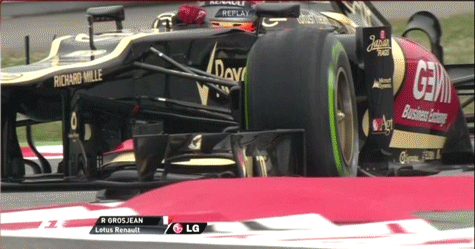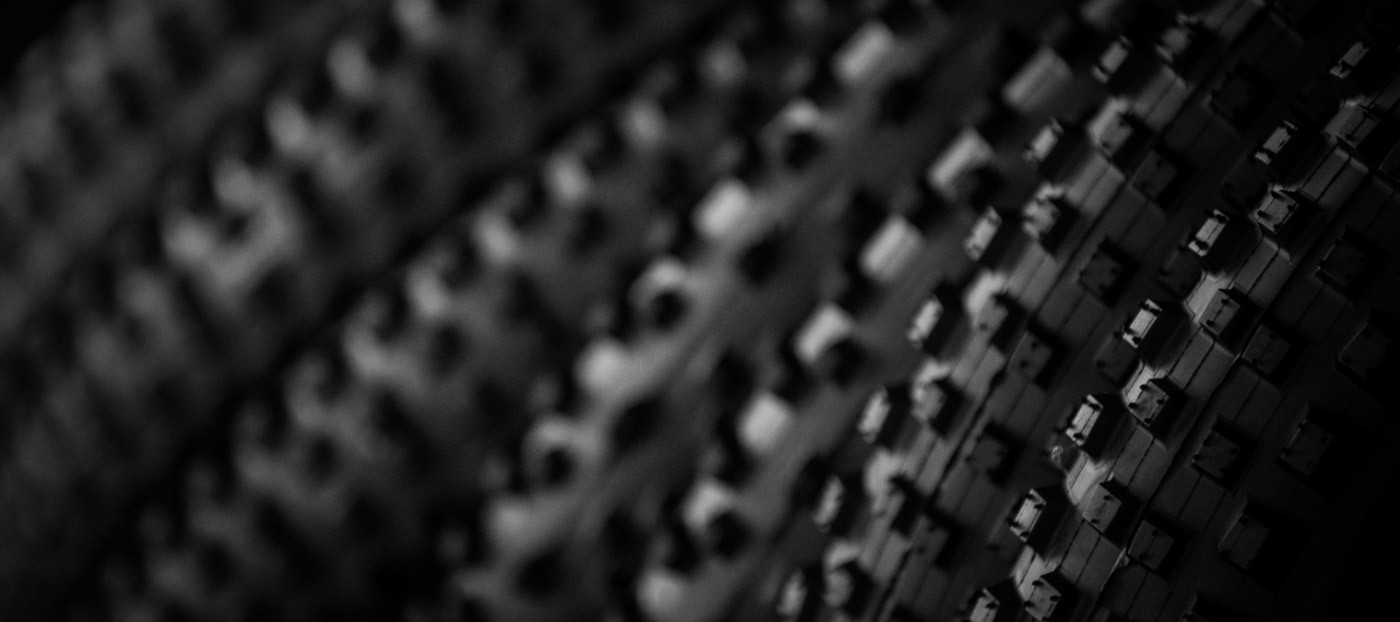Your tyres are your only point of contact with the road so it’s important to make sure you’re using the right ones. Aside from ensuring your tyres are not too wide for your bike, or too narrow for your wheel rims, these are the factors which will affect the tyre you choose
Grip
Your tyre’s main responsibility is to hold on to the road or trail surface and keeping you out of the bushes. How your tyre generates grip is heavily dependent on the tread pattern, rubber compound and weather.
On a road bike, a slick tyre experiences friction between itself and the road surface, giving you grip. The wider the tyre, the more rubber you have in contact with the road, the more friction it can generate and the more grip it provides. Choosing a wider tyre will increase the amount of grip you have during cornering.
Temperature and weather also play a part in the tyre choice you make. Soft tyre compounds are ideal for cool weather conditions, as they allow the tyre rubber to flex more and improve their friction with the road. However, if they get too warm the rubber can flex too much and the tyre will start to ‘slip’ along the road surface, making the bike’s handling feel vague and unresponsive.
Harder tyre compounds are better suited to high temperatures, as the more rigid rubber reduces slippage when the tyre is warm. Conversely, during cold temperatures, hard tyre compounds will deform less into the surface of the road and won’t provide as much grip as a softer compound.
Unfortunately, water is very good at lubricating rubber surfaces, so when it rains your grip reduces dramatically.
Contrary to popular belief, bicycle tyres are far too narrow to experience true aquaplaning on the road, so treaded tyres are not intended to help clear water away from the tyre surface.
Tyre treads allow the surface rubber to move and flex, which generates heat across the tyre. This helps to keep the surface rubber soft and supple, so that it can better maintain grip with the road surface through the cold water. The drawback is that in the dry, the surface area of rubber you have in contact with the road is reduced when using a treaded tyre, giving less overall grip (for a tyre with the same rubber compound).
Mountain bike tyres work in a very different way. The knobbly tread pattern clears the dirt out of the way, allowing the tyre to get through the loose stuff and gain some grip on the solid trail surface below. The deeper tread blocks also allow the tyre to flex and generate heat, just as a road tyre does.
Dry weather mountain bike tyres have a tightly packed and shallow tread pattern, whereas wet-weather tyres have a deeper and more aggressive tread pattern. In the dry, dusty mud clears away more easily and the tyre doesn’t need to dig through to the solid trail surface, plus the reduced tread depth improves rolling resistance.
Unlike a wet weather road tyre, mud can often cling to the tyre surface and stay there. A dry weather MTB tyre will quickly become gummed up with mud on a wet day, so that the next time the tyre comes around, there is already too much mud to clear out of the way, and you lose grip.

Comfort
You would be surprised at just how much your tyre can affect the comfort of your bike. Think of it a little bit like a balloon. A wider tyre has more air inside it like a large balloon, which gives it more room to deflect around and over rougher terrain features like gravel. A narrower tyre generally won’t deflect as much, making the ride harsher.
Effectively, your tyre acts like a rudimentary suspension system. Taking inspiration from cars again, look at the clip below of a racing car cutting over a kerb. Notice how much flex there is in the tyre compared to the suspension of the car itself. Your bicycle tyres react in the same way, deflecting and absorbing bumps.
It’s common knowledge amongst experienced road cyclists that a wider tyre absorbs more of the ‘buzz’ that would otherwise be transmitted through to the handlebar and saddle. A comfortable bike will not only make your riding a more pleasurable experience, the extra confidence it inspires can even make you an overall faster rider as well.
Speed
Broadly speaking, a wider tyre, will roll less efficiently than a narrower tyre due to the increased friction from a larger contact patch. Wider tyres also have a greater frontal area which can negatively affect the aerodynamic of a bike.
However, there is an exception to this. In recent years, several studies have shown that 25mm wide road bike tyres provide better rolling resistance than narrower 21mm and 23mm tyres. To an extent, 28mm tyres provide less rolling resistance than 25mm tyres also. Because the tyre is better able to deflect and absorb bumps over the road surface, the bike rolls more smoothly and maintains speed better. Up to a point (around 25 – 28mm wide), the better bump absorption helps to improve the overall rolling resistance of a tyre, but above that, the benefits become outweighed by increased friction and aerodynamic drag.
With a mountain bike tyre, rolling resistance is generally less of a concern than overall grip. However, as previously mentioned, a dry-weather tyre with a shallower tread depth will have less rolling resistance than a deep-treaded tyre, at the expense of wet-weather grip.
The science behind what makes a wide or narrow road tyre roll more efficiently is a very complicated business, however what will be immediately noticeable, whether you’re riding a road bike or a mountain bike, is your tyre pressure. If your tyres are underinflated, they’ll bob around and drag along the ground which absorbs a surprising amount of energy. If they’re over-inflated, they will try to skip and jump about, reducing grip and making for an uncomfortable and potentially unsafe ride.
Reliability
Just like any component on your bike, if your tyres aren’t performing reliably you’re going to spend as much time on the side of the road/trail fixing it as you are riding it. If your daily commute covers heavily potholed roads or broken glass topped paths, you might want to re-think that ultra-lightweight racing tyre you want to put on your bike.
Puncture protection is a difficult feature to engineer into a lightweight tyre. Tyres like Continental’s Gator Hardshell DuraSkin have been specifically engineered to meet the demands of, in their own words, ‘hardcore commuters’ who want speed and performance or a racing tyre with the puncture protection of a commuter tyre.
Whilst the extra protective layer around the whole tyre does add some weight over the regular Gatorskin Duraskin tyre, which won’t help you to beat your personal bests, you’ll lose a lot more time repairing an innertube in a rainy bus-shelter at 8am on a Monday morning. The placebo effect of having a more reliable tyre that you have confidence in can make you a faster rider as well.
Puncture protection in mountain bike tyres is equally important, particularly if you’re riding with innertubes. Mountain bike tyres are often run ‘tubeless’, where the winside of the tyre is filled with a liquid sealant before being pumped up. If your tyre suffers a puncture, the sealant is squeezed through the gap and dries before all the air can escape.
Tubeless tyres are highly recommended for regular riders, as they also reduce weight and allow you to run with lower air pressure for more grip. However, riders who don’t ride regularly may find that the liquid sealant goes off if left stationary for long periods of time.

